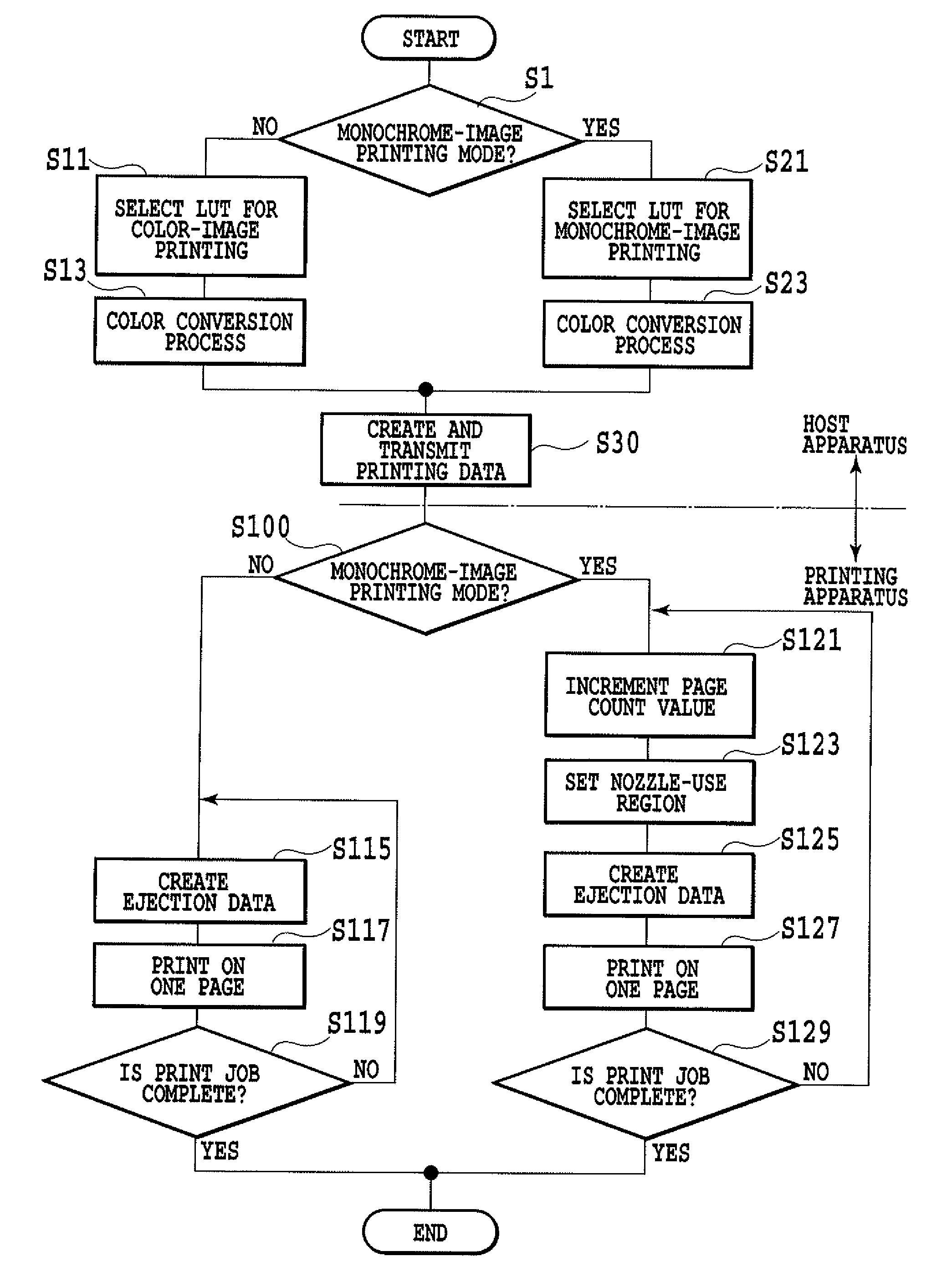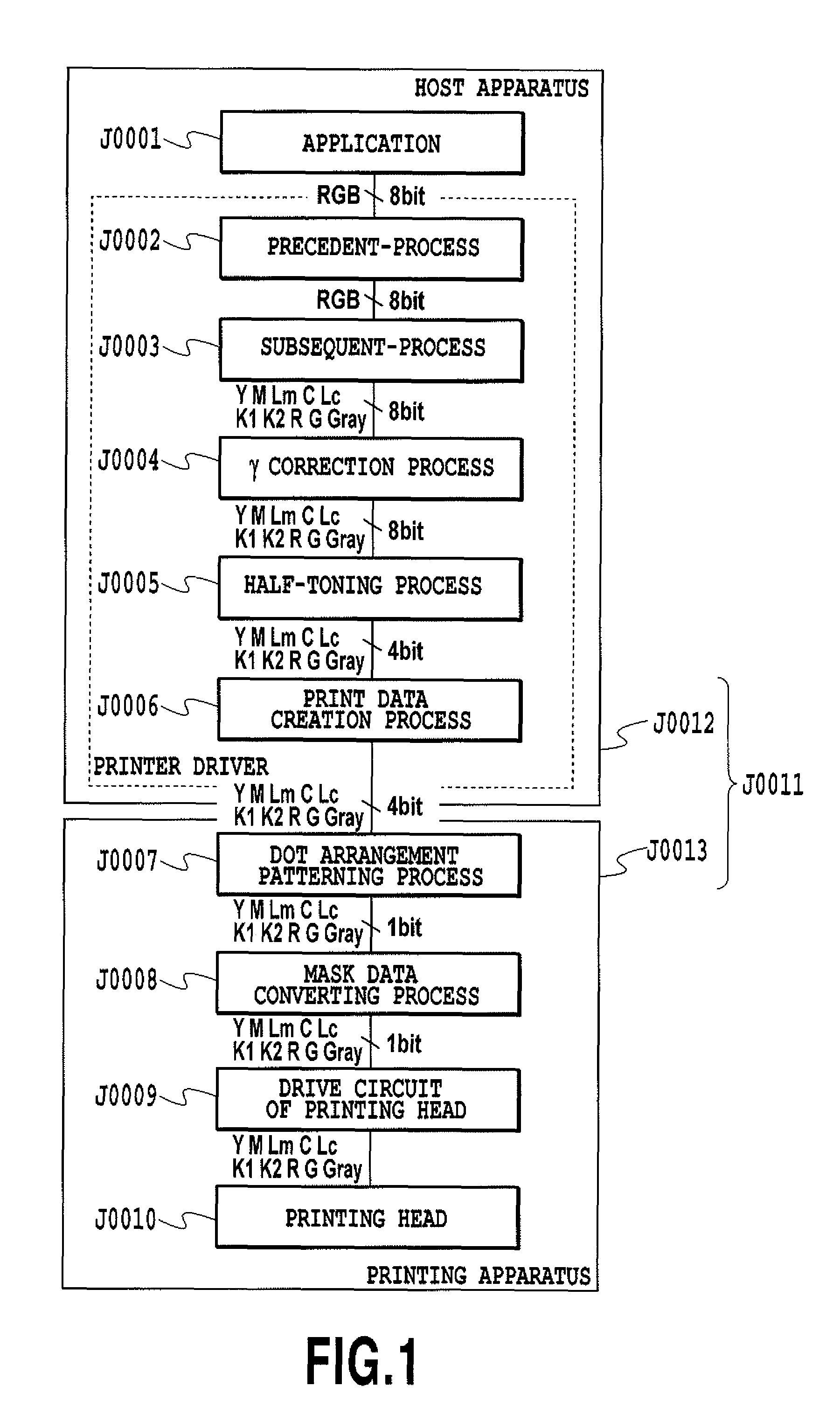Ink jet printing apparatus and printing method
a printing apparatus and printing method technology, applied in the direction of printing, other printing apparatus, etc., can solve the problems of insufficient accuracy, large hue change, and inability to reproduce desired colors faithfully in many cases, and achieve low coverage on a printing medium, the effect of suppressing deviation of dot-formation positions
- Summary
- Abstract
- Description
- Claims
- Application Information
AI Technical Summary
Benefits of technology
Problems solved by technology
Method used
Image
Examples
modification example 1
[0260]In the aforementioned example, the entire-surface nozzle-restriction printing is supposed to be uniformly carried out when the achromatic-monochrome-image printing (gray-scale printing) mode is selected. However, even when the gray-scale printing mode is selected, the entire-surface nozzle-restriction printing may not be carried out depending on the condition (for example, a type of printing medium, user setting, and the like.). Consequently, in this modification example 1, it is made possible to select a gray-scale printing in which the entire-surface nozzle-restriction printing is not employed, in addition to a gray-scale printing in which the entire-surface nozzle-restriction printing is employed.
[0261](i) Type of Printing Medium
[0262]A high-level image quality is demanded for printing media (high-quality glossy paper, low-priced glossy paper, and the like.) to be mainly used for printing a photographic image. On the other hand, image quality of such a high level is not req...
second embodiment
[0268]In the aforementioned first embodiment, for restricting the nozzles to be used in the restriction printing mode, the nozzle groups (Em0 to Em3), which are used in printing the central portion of the printing medium, are not fixed. However, it is not the essential matter of the present invention to not fix the nozzle groups. In the present invention, it suffices that print can be made over the entire printing region with the narrowed nozzle-use range, and the nozzle-group involved in printing on the central portion may be fixed.
[0269]Consequently, the second embodiment is characterized in fixing the nozzle groups used for printing on the central portion in the restriction printing mode. Incidentally, the other points are the same as those explained in the first embodiment, and the explanation thereof will be omitted herein.
[0270]The second embodiment will be explained below by using FIGS. 32, 37A and 37B. As mentioned above, each of nozzle groups Em0 and Em′ shown in FIG. 32 is...
PUM
 Login to View More
Login to View More Abstract
Description
Claims
Application Information
 Login to View More
Login to View More - R&D
- Intellectual Property
- Life Sciences
- Materials
- Tech Scout
- Unparalleled Data Quality
- Higher Quality Content
- 60% Fewer Hallucinations
Browse by: Latest US Patents, China's latest patents, Technical Efficacy Thesaurus, Application Domain, Technology Topic, Popular Technical Reports.
© 2025 PatSnap. All rights reserved.Legal|Privacy policy|Modern Slavery Act Transparency Statement|Sitemap|About US| Contact US: help@patsnap.com



